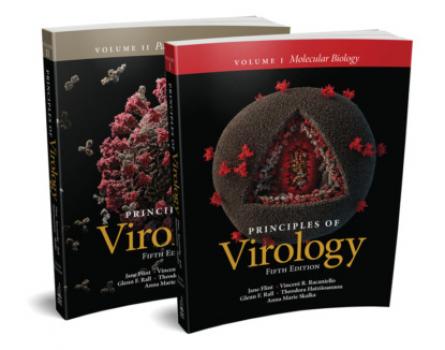Биология
Различные книги в жанре БиологияAnother End of the World is Possible
The critical situation in which our planet finds itself is no longer in doubt. Some things are already collapsing while others are beginning to do so, increasing the possibility of a global catastrophe that would mean the end of the world as we know it. As individuals, we are faced with a daily deluge of bad news about the worsening situation, preparing ourselves to live with years of deep uncertainty about the future of the planet and the species that inhabit it, including our own. How can we cope? How can we project ourselves beyond the present, think bigger and find ways not just to survive the collapse but to live it? In this book, the sequel to How Everything Can Collapse , the authors show that a change of course necessarily requires an inner journey and a radical rethinking of our vision of the world. Together these might enable us to remain standing during the coming storm, to develop a new awareness of ourselves and of the world and to imagine new ways of living in it. Perhaps then it will be possible to regenerate life from the ruins, creating new alliances in differing directions – with ourselves and our inner nature, between humans, with other living beings and with the earth on which we dwell.
Ecology
A definitive guide to the depth and breadth of the ecological sciences, revised and updated The revised and updated fifth edition of Ecology: From Individuals to Ecosystems – now in full colour – offers students and practitioners a review of the ecological sciences. The previous editions of this book earned the authors the prestigious ‘Exceptional Life-time Achievement Award’ of the British Ecological Society – the aim for the fifth edition is not only to maintain standards but indeed to enhance its coverage of Ecology. In the first edition, 34 years ago, it seemed acceptable for ecologists to hold a comfortable, objective, not to say aloof position, from which the ecological communities around us were simply material for which we sought a scientific understanding. Now, we must accept the immediacy of the many environmental problems that threaten us and the responsibility of ecologists to play their full part in addressing these problems. This fifth edition addresses this challenge, with several chapters devoted entirely to applied topics, and examples of how ecological principles have been applied to problems facing us highlighted throughout the remaining nineteen chapters. Nonetheless, the authors remain wedded to the belief that environmental action can only ever be as sound as the ecological principles on which it is based. Hence, while trying harder than ever to help improve preparedness for addressing the environmental problems of the years ahead, the book remains, in its essence, an exposition of the science of ecology. This new edition incorporates the results from more than a thousand recent studies into a fully up-to-date text. Written for students of ecology, researchers and practitioners, the fifth edition of Ecology: From Individuals to Ecosystems is anessential reference to all aspects of ecology and addresses environmental problems of the future.
Пруст и кальмар. Нейробиология чтения
Как мы учимся читать? Мозг каждого нового читателя – ребенка, который только приступил к наработке этого навыка, – обладает необычайным свойством выходить за пределы своих первоначальных способностей, чтобы понимать письменные символы. В течение тысячелетий с того момента, как человек научился читать, произошла настоящая интеллектуальная эволюция всего нашего вида. Мозг у того, кто разбирает клинопись шумеров на глиняных табличках, функционирует иначе, чем у того, кто читает алфавиты, и уж тем более чем у того, кто знаком с новейшими технологиями. Здесь налицо как прогресс, так и повод для беспокойства: письменность уменьшила потребность в тренировке памяти, а усиленные информационные потоки и особенности современной цифровой культуры могут иметь глубокие последствия для нашего мозга в будущем. В этой книге, мгновенно завоевавшей мировую известность, видный американский нейробиолог Марианна Вулф исследует, как «открытая архитектура», пластичность нашего мозга помогает и мешает людям в их попытках научиться читать и обрабатывать письменный язык. Читателю предстоит увлекательное путешествие по временам и эпохам, знакомство с разнообразными иллюстрациями развития отдельного человека – от младенца, который слушает колыбельную, до настоящего эксперта – читателя произведений Пруста. Разобравшись, как эволюция и развитие чтения изменили само устройство человеческого мозга и суть нашей интеллектуальной жизни, мы поймем, что мы – это действительно то, что мы читаем. В формате PDF A4 сохранён издательский дизайн.
The Disappearance of Butterflies
In the last fifty years our butterfly populations have declined by more than eighty per cent and butterflies are now facing the very real prospect of extinction. It is hard to remember the time when fields and meadows were full of these beautiful, delicate creatures – today we rarely catch a glimpse of the Wild Cherry Sphinx moths, Duke of Burgundy or the even once common Small Tortoiseshell butterflies. The High Brown Fritillary butterfly and the Stout Dart Moth have virtually disappeared. <br /><br />The eminent entomologist and award-winning author Josef H. Reichholf began studying butterflies in the late 1950s. He brings a lifetime of scientific experience and expertise to bear on one of the great environmental catastrophes of our time. He takes us on a journey into the wonderful world of butterflies – from the small nymphs that emerge from lakes in air bubbles to the trusting purple emperors drunk on toad poison – and immerses us in a world that we are in danger of losing forever. Step by step he explains the science behind this impending ecological disaster, and shows how it is linked to pesticides, over-fertilization and the intensive farming practices of the agribusiness. <br /><br />His book is a passionate plea for biodiversity and the protection of butterflies.
Plant Nucleotide Metabolism
All organisms produce nucleobases, nucleosides, and nucleotides of purines and pyrimidines. However, while there have been a number of texts on nucleotide metabolism in microorganisms and humans, the presence of these phenomena in plant life has gone comparatively unexplored. This ground-breaking new book is the first to focus exclusively on the aspects of purine nucleotide metabolism and function that are particular to plants, making it a unique and essential resource. The authors provide a comprehensive break down of purine nucleotide structures and metabolic pathways, covering all facets of the topic. Furthermore, they explain the role that purine nucleotides can play in plant development, as well as the effects they may have on human health when ingested. Plant Nucleotide Metabolism offers a unique and important resource to all students, researchers, and lecturers working in plant biochemistry, physiology, chemistry, agricultural sciences, nutrition, and associated fields of research.
Principles of Plant Genetics and Breeding
The revised edition of the bestselling textbook, covering both classical and molecular plant breeding Principles of Plant Genetics and Breeding integrates theory and practice to provide an insightful examination of the fundamental principles and advanced techniques of modern plant breeding. Combining both classical and molecular tools, this comprehensive textbook describes the multidisciplinary strategies used to produce new varieties of crops and plants, particularly in response to the increasing demands to of growing populations. Illustrated chapters cover a wide range of topics, including plant reproductive systems, germplasm for breeding, molecular breeding, the common objectives of plant breeders, marketing and societal issues, and more. Now in its third edition, this essential textbook contains extensively revised content that reflects recent advances and current practices. Substantial updates have been made to its molecular genetics and breeding sections, including discussions of new breeding techniques such as zinc finger nuclease, oligonucleotide directed mutagenesis, RNA-dependent DNA methylation, reverse breeding, genome editing, and others. A new table enables efficient comparison of an expanded list of molecular markers, including Allozyme, RFLPs, RAPD, SSR, ISSR, DAMD, AFLP, SNPs and ESTs. Also, new and updated “Industry Highlights” sections provide examples of the practical application of plant breeding methods to real-world problems. This new edition: Organizes topics to reflect the stages of an actual breeding project Incorporates the most recent technologies in the field, such as CRSPR genome edition and grafting on GM stock Includes numerous illustrations and end-of-chapter self-assessment questions, key references, suggested readings, and links to relevant websites Features a companion website containing additional artwork and instructor resources Principles of Plant Genetics and Breeding offers researchers and professionals an invaluable resource and remains the ideal textbook for advanced undergraduates and graduates in plant science, particularly those studying plant breeding, biotechnology, and genetics.
Mixed Breeds For Dummies
Understand your mixed-breed dog Discover tips and tricks for the most effective training techniques Share your life with your new mixed-breed companion Own a classy dog—no pedigree required All dogs are unique—but mixed breeds are even more so! This friendly guide helps you count the ways, including why they often enjoy better health than their pedigreed counterparts and the reasons they can make better domestic companions. Whether you prefer mystery mixes or designer Labradoodles, a rescue from a shelter or a pup from a breeder—or you just want to know more about your dog—you'll find everything you need to properly choose, train, and care for your not-quite-best-in-show (but much-loved) best friend. This book will ensure you and your mixed-breed pal will live happily and healthily ever after. Inside… Decide which mix is the one for you Understand your pooch's temperament Establish discipline and overcome common training challenges Groom and exercise your dog the right way
Fishing For Dummies
Catch the fish you want, and more of them Choose the right gear and the right locations to fish Get the whole family involved safely Get hooked on a lifelong hobby Millions of folks find fishing relaxing, challenging, entertaining…and a great way to spice up dinner. This 3rd edition of the top-selling guidebook shows you everything you need to know about the necessary gear, where different kinds of fish hang out, what types of bait and lures to stock, how to stay safe on the water, and even how to clean and cook your catch. Plus, you'll learn about the latest high-tech fishing gadgets and GPS hacks, get advice on fishing from boats, and much more. Here's where to drop your line! Inside… Advice on clothing and other gear Choosing a rod and reel All about line and tackle The latest high-tech gadgets Which bait for which fish How to evaluate the water Exploring fly fishing basics Tips for fishing from boats and kayaks
Principles of Virology, Volume 2
Principles of Virology , the leading virology textbook in use, is an extremely valuable and highly informative presentation of virology at the interface of modern cell biology and immunology. This text utilizes a uniquely rational approach by highlighting common principles and processes across all viruses. Using a set of representative viruses to illustrate the breadth of viral complexity, students are able to under-stand viral reproduction and pathogenesis and are equipped with the necessary tools for future encounters with new or understudied viruses. This fifth edition was updated to keep pace with the ever-changing field of virology. In addition to the beloved full-color illustrations, video interviews with leading scientists, movies, and links to exciting blogposts on relevant topics, this edition includes study questions and active learning puzzles in each chapter, as well as short descriptions regarding the key messages of references of special interest. Volume I: Molecular Biology focuses on the molecular processes of viral reproduction, from entry through release. Volume II: Pathogenesis and Control addresses the interplay between viruses and their host organisms, on both the micro- and macroscale, including chapters on public health, the immune response, vaccines and other antiviral strategies, viral evolution, and a brand new chapter on the therapeutic uses of viruses. These two volumes can be used for separate courses or together in a single course. Each includes a unique appendix, glossary, and links to internet resources. Principles of Virology, Fifth Edition , is ideal for teaching the strategies by which all viruses reproduce, spread within a host, and are maintained within populations. This edition carefully reflects the results of extensive vetting and feedback received from course instructors and students, making this renowned textbook even more appropriate for undergraduate and graduate courses in virology, microbiology, and infectious diseases.
Principles of Virology
Principles of Virology , the leading virology textbook in use, is an extremely valuable and highly informative presentation of virology at the interface of modern cell biology and immunology. This text utilizes a uniquely rational approach by highlighting common principles and processes across all viruses. Using a set of representative viruses to illustrate the breadth of viral complexity, students are able to under-stand viral reproduction and pathogenesis and are equipped with the necessary tools for future encounters with new or understudied viruses.This fifth edition was updated to keep pace with the ever-changing field of virology. In addition to the beloved full-color illustrations, video interviews with leading scientists, movies, and links to exciting blogposts on relevant topics, this edition includes study questions and active learning puzzles in each chapter, as well as short descriptions regarding the key messages of references of special interest. Volume I: Molecular Biology focuses on the molecular processes of viral reproduction, from entry through release. Volume II: Pathogenesis and Control addresses the interplay between viruses and their host organisms, on both the micro- and macroscale, including chapters on public health, the immune response, vaccines and other antiviral strategies, viral evolution, and a brand new chapter on the therapeutic uses of viruses. These two volumes can be used for separate courses or together in a single course. Each includes a unique appendix, glossary, and links to internet resources. Principles of Virology, Fifth Edition , is ideal for teaching the strategies by which all viruses reproduce, spread within a host, and are maintained within populations. This edition carefully reflects the results of extensive vetting and feedback received from course instructors and students, making this renowned textbook even more appropriate for undergraduate and graduate courses in virology, microbiology, and infectious diseases.









